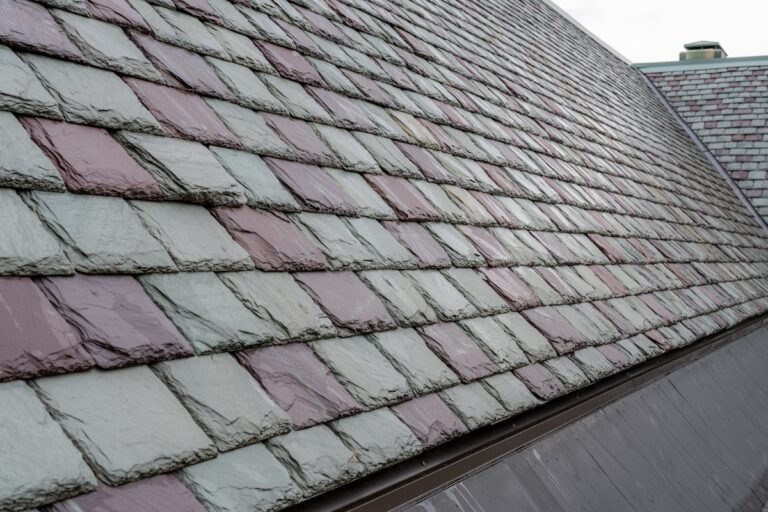A well-ventilated roof is crucial for maintaining a healthy and energy-efficient home. Roof vents play a vital role in regulating temperature, moisture, and air circulation within your attic space. In this guide, we’ll delve into:
- The various types of roof vents
- Signs that indicate you may need better ventilation
- Installation procedures
- Costs involved
- Tips for choosing the right type of roof vent for your home
What is a Roof Vent?

Before we explore the different types of roof vents, let’s understand what they are and why they are important. A roof vent is a device installed on the roof of a building to allow proper airflow in and out of the attic space. It helps in removing excess heat, moisture, and pollutants, thereby preventing damage to the roof structure and enhancing indoor air quality.
Signs that You Need Better Roof Vents
Knowing when to add a roof vent can be tricky for the average homeowner. Here are some common signs that you need better roof vents.
- High Energy Bills: Inadequate ventilation can lead to the accumulation of heat in the attic, causing your HVAC system to work harder to maintain comfortable temperatures indoors.
- Excessive Moisture: Moisture buildup in the attic can lead to mold growth, wood rot, and structural damage.
- Uneven Temperature Distribution: If certain areas of your home feel significantly warmer or cooler than others, it could be due to poor attic ventilation.
- Ice Dams: In colder climates, insufficient ventilation can contribute to the formation of ice dams on the roof, leading to water damage and leaks.
4 Different Types of Roof Vents
Roof vents come in all different shapes and sizes. Here are some common styles that might be right for your home.
1) Ridge Vents:
Ridge vents are installed along the peak of the roof and are designed to allow hot air to escape from the attic.
- Pros: Provides continuous ventilation along the entire length of the roof ridge, aesthetically pleasing as it blends with the roofline, relatively low profile.
- Cons: Requires a properly sized soffit vent for effective airflow, may not be suitable for roofs with complex geometries.
2) Static Vents:
Static vents, also known as roof louvers or box vents, are stationary vents installed on the roof surface.
- Pros: Simple and cost-effective solution, effective at removing hot air and moisture from the attic, available in various styles and materials.
- Cons: Relies on natural convection for airflow, may not provide sufficient ventilation in areas with low wind or stagnant air.
3) Power Vents:
Power vents, or attic fans, are motorized units that actively exhaust air from the attic space.
- Pros: Can quickly and efficiently remove hot air and moisture, ideal for areas with limited natural ventilation, can be controlled manually or automatically.
- Cons: Requires electricity to operate, may create negative pressure in the attic if not properly balanced with intake vents, additional maintenance required.
4) Gable Vents:
Gable vents are installed on the gable ends of the roof and allow air to enter and exit the attic space.
- Pros: Effective at ventilating attic spaces with gable walls, aesthetically pleasing, relatively easy to install.
- Cons: May not provide uniform airflow throughout the attic, vulnerable to wind-driven rain and debris entry.
Cost of Installing a Roof Vent
The cost of installing a roof vent can vary depending on several factors, including the type of vent, the size and complexity of the roof, and labor costs in your area. On average, homeowners can expect to pay anywhere from $300 to $800 for the installation of a roof vent. Additional costs may include materials, labor, permits, and any necessary repairs or modifications to the roof.
How to Install a Roof Vent: 6 Steps

Installing a roof vent doesn’t have to be complicated. Simply follow these 6 steps.
1) Assess Ventilation Needs:
Determine the appropriate type and number of roof vents needed based on the size and layout of your attic space.
2) Choose Vent Location:
Select the optimal location for installing the roof vents, ensuring proper airflow and avoiding obstacles such as plumbing vents or electrical wiring.
3) Prepare Roof Surface:
Clean the area where the vent will be installed and make any necessary adjustments to the roof decking.
4) Install Vent Flashing:
Secure the vent flashing to the roof surface, ensuring a watertight seal around the opening.
5) Secure Vent in Place:
Attach the roof vent to the flashing using screws or nails, following manufacturer instructions.
6) Test Ventilation:
Once the vent is installed, check for proper airflow and make any adjustments as needed.
While you can follow these steps for a roof vent installation, we always recommend hiring a professional for any work that is done on your roof.
How to Choose the Right Type of Roof Vent for Your Home
Not sure which roof vent is right for your home? Here are some tips on choosing the right one:
- Consider Roof Design: Choose a vent style that complements the design and aesthetics of your roof while ensuring efficient ventilation.
- Evaluate Ventilation Needs: Assess the size and layout of your attic space to determine the type and number of vents required for adequate airflow.
- Climate Considerations: Take into account the climate and weather conditions in your area to select a vent that can withstand elements such as wind, rain, and snow.
- Energy Efficiency: Opt for energy-efficient vents that can help reduce heating and cooling costs by promoting better air circulation and temperature control.
- Consult with Professionals: Seek advice from roofing contractors or ventilation specialists to ensure you choose the right type of vent for your specific needs and budget.
Proper Roof Ventilation With Johnson Restoration
Proper attic ventilation is essential for maintaining a healthy, energy-efficient home and extending the lifespan of your roof. By understanding the different types of roof vents, signs that indicate you may need better ventilation, installation procedures, costs involved, and tips for choosing the right vent for your home, you can make informed decisions to improve the comfort and durability of your living space.
Whether you opt for ridge vents, static vents, power vents, or gable vents, investing in quality ventilation will pay off in the long run, ensuring a safer, more comfortable environment for you and your family. Contact Johnson Restoration today to schedule an inspection for your roof today.






